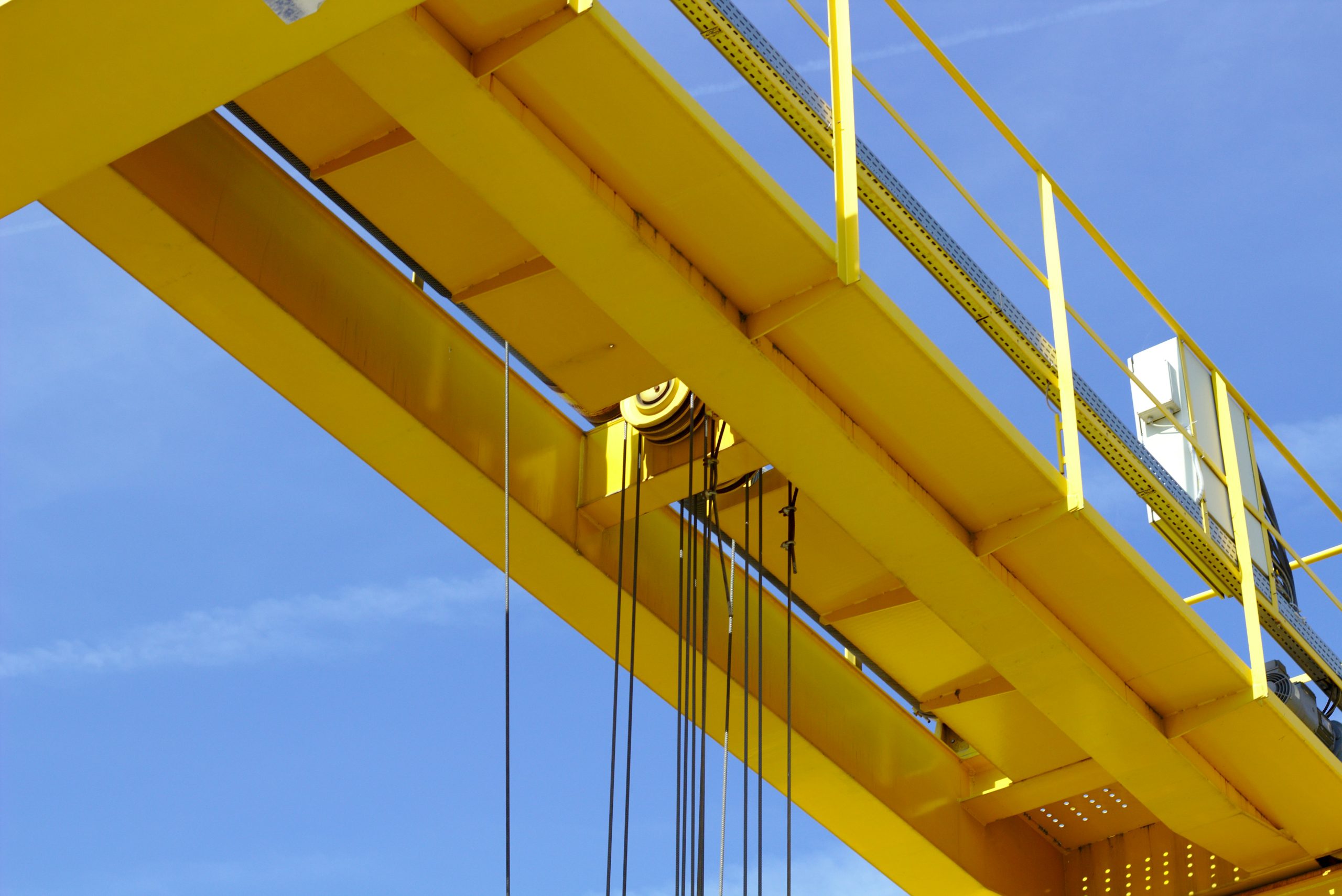Mastering the Main Parts of a Gantry Crane: A Step-by-Step Guide
Date: 2024-05-23 Share:
Gantry Cranes: An Overview
Gantry cranes, also known as portal cranes, are a type of material handling equipment used to lift and transport heavy items within a fixed area. These cranes are widely utilized across diverse industries such as construction, manufacturing, logistics, and shipping due to their exceptional load-bearing capacity and operational flexibility.
Defining Gantry Cranes
Gantry cranes are characterized by their unique structure, which typically consists of two vertical legs supporting a horizontal beam. This configuration allows for the movement of heavy loads along the length of the beam, providing efficient lifting and positioning capabilities.
Basic Introduction to Gantry Cranes
The global gantry crane market is forecast to surpass a valuation of US$ 3 billion by 2031, expanding at a CAGR of approximately 6% over the next ten years. This growth is attributed to the extensive uptake across the construction industry, driven by the expanding scope of public and private infrastructure development.
Common Uses in Various Industries
Gantry cranes find widespread application in various industries for tasks such as loading and unloading cargo in shipping yards, assembling large components in manufacturing facilities, and facilitating construction activities at project sites. Their adaptability and versatility make them indispensable for handling heavy materials in diverse operational environments.
Benefits of Using Gantry Cranes
The structural stability and impressive load capacity of gantry cranes make them essential for lifting and transporting heavy items with precision and safety. Additionally, their operational flexibility enables seamless maneuvering within confined spaces while ensuring optimal safety performance.
Structural Stability and Load Capacity
According to market analysis from Fact.MR, it is anticipated that the size of the worldwide gantry crane market will increase to around USD 3.6 billion by 2030, with a compound annual growth rate (CAGR) of approximately 6% between 2023 and 2030. This underscores the significant role played by gantry cranes in meeting the demands for robust load-handling solutions across various industries.
Operational Flexibility and Safety Performance
Gantry cranes offer unparalleled operational flexibility, allowing for precise positioning capabilities that enhance efficiency in material handling operations. Moreover, their safety performance is supported by advanced features such as anemometers and lightning rods, ensuring safe operations even in challenging environmental conditions.
What are the main parts of a gantry crane?
Gantry cranes consist of several essential components that work together to facilitate the lifting and transportation of heavy loads within industrial and commercial settings. Understanding these main parts is crucial for ensuring the safe and efficient operation of gantry cranes.
The Structural Components
Main Girder and Cantilever
The main girder serves as the primary horizontal beam that spans the width of the gantry crane, providing structural support for the lifting mechanism. In some configurations, a cantilever may extend from one end of the main girder, offering additional reach for specific lifting requirements.
Supporting Legs and Trolley
The supporting legs are vertical structures that provide stability and support for the entire gantry crane system. They are strategically positioned at each end of the main girder to distribute the weight of lifted loads evenly. Additionally, the trolley is a critical component that moves along the main girder, enabling horizontal movement during load handling operations.
Operational Mechanisms
Driver’s Cabin and Lifting Wire Rope
The driver’s cabin houses the controls and interface used by operators to manage the movement and positioning of loads. It provides a vantage point for overseeing lifting operations while ensuring operator safety. The lifting wire rope is an integral part of the crane’s hoisting mechanism, responsible for bearing and raising heavy loads with precision.
Hook and Optional Features
The hook is attached to the lifting wire rope and serves as the primary point of contact with loads being lifted or transported. This component plays a pivotal role in securely holding items during lifting operations. Additionally, gantry cranes may be equipped with optional features such as anemometers and lightning rods to enhance safety in challenging environmental conditions.
Gantry cranes have been subject to various patents over time, showcasing their significance in material handling applications across different industries. For instance, patent documents describe innovations such as foldable gantry cranes capable of ascending and descending, emphasizing their adaptability in diverse working environments.
Exploring the Functions of Gantry Crane Components
Gantry cranes are equipped with various components that play distinct roles in facilitating efficient material handling operations. Understanding the functions of these components is essential for optimizing the performance and safety of gantry cranes within industrial and commercial settings.
The Role of the Main Girder
The main girder serves as the backbone of the gantry crane, providing crucial support and stability during lifting and transportation activities. Its robust construction enables it to withstand heavy loads, ensuring reliable performance and operational safety. The main girder’s horizontal orientation allows for seamless movement of the trolley along its length, enabling precise positioning and efficient load handling within the designated working area.
In a study comparing different gantry crane configurations, it was found that the main girder plays a pivotal role in determining the overall load-bearing capacity and structural integrity of the crane system. This underscores its significance in supporting heavy loads while maintaining stability, making it a fundamental component in single girder and double girder gantry crane designs.
The Importance of the Trolley
The trolley is an integral component responsible for facilitating movement and load handling operations within the gantry crane system. It runs along the main girder, allowing for horizontal displacement of loads with precision and control. The trolley’s ability to traverse the length of the main girder enhances operational flexibility, enabling efficient positioning of heavy items during lifting and transportation processes.
Research findings highlight that the trolley significantly influences the overall maneuverability and load-handling capabilities of gantry cranes. Whether utilized in single or double girder configurations, the trolley’s functionality remains consistent, emphasizing its critical role in optimizing material handling operations.
Safety Features
Gantry cranes are equipped with advanced safety features designed to mitigate risks associated with lifting heavy loads and operating in challenging environmental conditions. Anemometers are employed to measure wind speed, providing real-time data to ensure safe crane operation during windy weather. Additionally, lightning rods are installed to dissipate lightning strikes away from the crane structure, minimizing potential damage due to electrical surges.
The integration of these safety features aligns with industry standards aimed at enhancing workplace safety across various sectors utilizing gantry cranes. By incorporating advanced technologies such as anemometers and lightning rods, operators can effectively mitigate environmental risks while ensuring uninterrupted material handling operations.
Importance of Understanding Gantry Crane Parts
Understanding the main parts of a gantry crane is crucial for enhancing operational efficiency and ensuring safety within industrial and commercial settings. By comprehending the functions and significance of each component, operators and maintenance personnel can optimize the performance of gantry cranes while prioritizing workplace safety.
Enhancing Operational Efficiency
Precise Positioning: One key aspect of understanding gantry crane parts is the ability to achieve precise positioning during material handling operations. The main girder, supporting legs, and trolley work in tandem to facilitate accurate placement of heavy loads, minimizing the risk of errors or misalignments. This precise positioning capability contributes to streamlined workflow processes and efficient utilization of resources within industrial facilities.
Customizability: Industry experts emphasize that a thorough understanding of gantry crane parts enables customization based on specific operational requirements. Whether it involves adjusting lifting wire rope configurations or optimizing driver’s cabin controls, the ability to customize various components enhances operational flexibility and ensures that the crane system aligns with unique material handling needs.
The insights from industry experts underscore the impact of customizability in improving overall productivity and adaptability across diverse industrial applications. By tailoring gantry crane components to suit specific tasks, organizations can achieve greater efficiency in material handling operations while accommodating evolving operational demands.
Ensuring Safety
Regular Maintenance: Proper comprehension of gantry crane parts is instrumental in establishing comprehensive maintenance protocols that uphold operational safety. Maintenance procedures encompass inspecting structural components, verifying operational mechanisms, and addressing potential wear or damage. This proactive approach to maintenance mitigates risks associated with equipment failure, safeguarding personnel and assets within industrial environments.
Environmental Adaptability: The insights shared regarding ASME B30.2-2022 Overhead and Gantry Cranes highlight the importance of considering environmental factors when understanding gantry crane parts. Environmental adaptability encompasses integrating features such as anemometers and lightning rods to mitigate risks posed by adverse weather conditions. By accounting for environmental variables, organizations can ensure uninterrupted crane operations while prioritizing workplace safety.
Moreover, the impact of gantry cranes on the construction equipment industry underscores the necessity for maintaining optimal safety standards across diverse sectors utilizing these cranes. The commitment to regular maintenance and environmental adaptability reflects a proactive approach toward ensuring safe and reliable gantry crane operations amid dynamic industrial landscapes.
Safety and Maintenance Tips for Gantry Cranes
Ensuring the optimal performance and safety of gantry cranes necessitates adherence to rigorous maintenance practices and implementation of comprehensive safety protocols. By conducting regular inspections, implementing preventive maintenance measures, and providing adequate safety training, operators and maintenance personnel can uphold the reliability and efficiency of gantry crane operations.
Conducting Regular Inspections
Regular inspections are paramount in identifying potential issues and ensuring the structural integrity of gantry cranes. This involves thorough checks of structural components such as the main girder, supporting legs, trolley, driver’s cabin, and lifting wire rope. Additionally, operational mechanisms including controls, hoisting systems, and optional features such as anemometers and lightning rods should be meticulously examined to detect any signs of wear or malfunction.
Implementing Preventive Maintenance
Implementing a proactive approach to maintenance is essential for preserving the performance and longevity of gantry cranes. Timely repairs and upgrades play a crucial role in addressing potential issues before they escalate into hazards. By adhering to manufacturer recommendations and industry best practices, organizations can minimize downtime while ensuring that gantry cranes operate at peak efficiency.
Safety Protocols and Training
Educating operators and maintenance personnel on comprehensive safety protocols is fundamental in mitigating risks associated with gantry crane operations. This includes familiarizing personnel with advanced safety features such as proximity sensors, anti-collision systems, and load monitoring technologies. Furthermore, providing specialized training on emergency procedures ensures swift responses in critical situations, enhancing overall workplace safety.
By integrating these safety practices into routine operations, organizations can uphold the dependability of gantry cranes while prioritizing the well-being of personnel working within their vicinity.
This section provides valuable insights into maintaining optimal performance levels for gantry cranes through regular inspections, preventive maintenance measures, as well as comprehensive safety protocols for operators.
Nante Crane
Nante Crane, a leading manufacturer of gantry cranes, offers a comprehensive range of main parts that are integral to the operation and maintenance of these cranes. Understanding these components is crucial for anyone involved in the operation, maintenance, or inspection of gantry cranes.
The primary structure of Nante Crane’s gantry cranes is the bridge, which is a horizontal beam that carries the load. The bridge is typically composed of two end trucks and one or two bridge girders, depending on the crane’s capacity. The bridge girders are designed to withstand the load and the stress caused by the crane’s movement.
The hoist and trolley, which lift and move the load along the bridge, are another critical part of the crane’s structure. Nante Crane offers a variety of hoists and trolleys, each designed for specific applications and load capacities. The hoist is equipped with a wire rope or chain, and a hook for attaching the load. The trolley is designed to move smoothly along the bridge, carrying the hoist and the load.
The legs, which support the crane, are another essential part of the crane’s structure. Nante Crane’s gantry cranes typically have two or four legs, depending on the crane’s design and capacity. The legs are designed to support the weight of the crane and the load, and to provide stability during the crane’s operation.
The drive mechanisms, which move the crane and trolley, are also a crucial part of the crane’s structure. Nante Crane’s drive mechanisms are designed for smooth and precise movement, ensuring efficient operation of the crane.
In conclusion, the main parts of Nante Crane‘s gantry cranes are designed to ensure the safe, efficient, and reliable operation of these cranes. Mastering these components is a key step towards understanding and operating gantry cranes effectively.
 English
English







